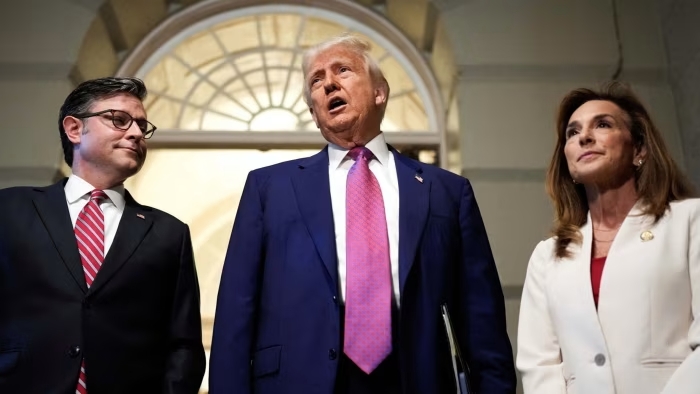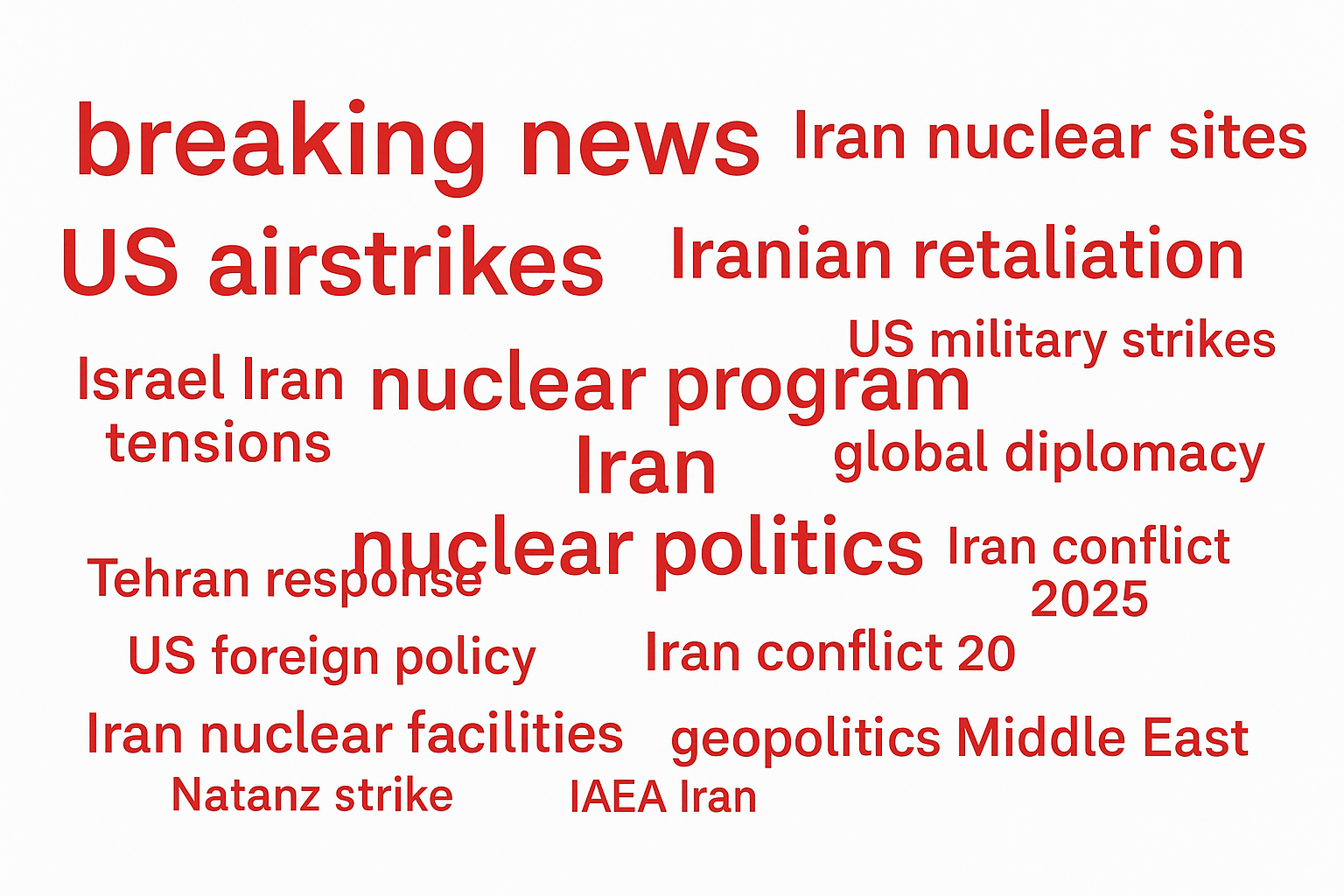Johnson Hails Deal on $3tn Trump Budget Bill but Republican Hardliners Hold Out – 7 Key Impacts on the U.S. Economy

In a drastic and historic change that has appeared within the realm of U.S. politics, House Speaker Mike Johnson has made a public display of his strong endorsement of a groundbreaking pact regarding the massive $3 trillion Trump budget bill, a piece of legislation that is intended to pledge sweeping and revolutionary economic overhauls. Yet, it is worth noting that this endorsement is not universal across all sides of the political process. Republican hardliners are actively rebelling against this pact, citing their grave concerns regarding fiscal responsibility as well as the long-term economic dangers that could potentially materialize from such a large financial outlay. This article is intended to explore in depth the entire framework around this controversial deal, presenting a full breakdown of its seven primary effects on the American economy and what they could potentially mean for the future.
The $3 Trillion Trump Budget Bill: What’s in It
The $3 trillion budget that has been proposed is one of the largest in American history, and its lofty aim is to essentially remake the country’s economy and finances. While it has generated some huge controversy and dissension among constituents, the bill has big spending and a wide array of incentives that are expressly designed to stimulate economic growth and development across sectors.
Major Categories of Spending
The bill invests substantial amounts of funds in the following:
Defense and military modernization
Social security and Medicare stability
Student loan forgiveness and education
Upgrading healthcare infrastructure
Climate change and clean energy programs
Tax cuts and other incentives
Key features are:
Increased tax cuts targeted at families with moderate-income brackets.
Lower corporate tax rate from 21% to 18%
R&D tax credits to encourage innovation
Child care tax credits to support working families
These measures are designed to boost both consumer confidence and investment.
Investment in Infrastructure
Among the top highlights is the $800 billion infrastructure investment:
High-speed rail initiatives
Innovative initiatives for building intelligent cities
Broadband expansion in rural areas
EV charging station networks
Johnson’s Support: A Political Strategic Move
Speaker Johnson’s support of the bill is one of real substance in the course of his political life, one that marks a significant move towards a more pragmatic style of leadership and one more attuned to the realities of the moment.
Background of the Budget Negotiations
Negotiations went on for a few months and included:
Bipartisan committees
Influential lobbying groups
Executive branch policymakers
Why Johnson Signed the Deal
Johnson argued that the bill suggested:
Responds to immediate and present economic requirements.
Maintains national defense priorities
Offers a strong defense of American businesses and American workers.
But the support he offers is bound to give rise to an impression of estrangement from his party’s more conservative wing.
Republican Hardliners: What Are the Reasons Behind Their Opposition?
Despite Johnson’s backing, several conservative Republicans are strongly opposed to the budget deal proposed.
Fiscal Conservatism versus Economic Stimulus
Hardliners argue that:
The bill unjustifiably raises government expenditures
It moves away from traditional conservative economic principles
Issues with National Debt
The majority of the critics are concerned that the new legislation will:
Contribute heavily to the national debt
Leaving a heavy responsibility and challenge to future generations.
We’ve been trying to devalue the U.S. dollar in the world market.
Major Economic Implications Arising from the $3 Trillion Budget Bill
Let us take a close and careful examination of the seven most important and influential effects that are generated from this revolutionary and historic legislation.
1. Consumer Expenditure and GDP Growth
With increasing government spending accompanied by the introduction of tax relief policies:
The Gross Domestic Product, or GDP for short, is projected to grow at a rate of between 2.5% and 3.0% every year for the next three years.
Consumer expenditure may increase as a result of reduced tax payments and increased confidence.
2. The Unemployment Process and the Unemployment Level Corresponding to Job Creation
The bill’s business incentives and infrastructure seek to:
Create over 4 million new jobs.
Decrease the level of unemployment below 3.5%
Industries likely to benefit:
Building
Renewable energy
Technology startups
3. The Phenomenon of Inflation and How the Federal Reserve Responded to It
Stimulus spending is likely to be the source of inflation level problems. But:
Economists predict low inflation, peaking at 3.8%
The Federal Reserve will most likely move interest rates in a cautious manner
4. Impacts on Stock Markets
Investors have responded positively, especially in the aforementioned regions:
Construction and energy industries
Technology and innovation companies
Health sectors
This scenario can assist in maintaining a long-term continuation of a bull market that can easily extend to the next fiscal year.
5. Impacts on the Deficit and National Debt
The flip side of extravagant spending:
This deficit has been estimated to potentially rise by a huge sum of $600 billion in the short-term horizon.
The nation’s debt can reach an astonishing figure of $36 trillion in 2027.
This is a core and fundamental argument that is frequently made by fiscal conservatives.
6. Effect on Small Businesses and New Firms
With the implementation of lower corporate tax rates, along with various credits available for businesses:
Small companies acquire liquidity
Startups are supported by R&D credits and employment grants
This can potentially generate a huge increase in entrepreneurial activity throughout the whole nation.
7. The Global Economy’s Perception
Globally, the U.S. is under close observation:
Global markets perceive the law as a progressive and bold step for economic growth.
It could make the U.S. dollar more powerful if the growth of GDP continues
But the increase in debt may be the start of the negotiation and debate regarding credit ratings.
Professional Analysis of the Legislative Bill
There is a significant split among economists over the long-term impact and effects of the bill at issue.
Dr. Lisa Chapman, an affiliate at Harvard University, said, “This bill is bold, but not reckless.”
Thomas Ritter (CATO Institute): “It’s an economic sugar rush with a painful aftertaste.”
IMF Analysts: “The bill would potentially be growth-positive if it is matched with balanced monetary policy.”
Public Reaction and Media Attention
Surveys have shown:
62% of Americans favor the bill
28% are against it
10% are not sure
Media reporting continues to be polarized according to ideology.
CNN and MSNBC emphasize economic gains
Fox News and WSJ caution against government fiscal irresponsibility
FAQs
Q1: What is the primary purpose of the $3tn Trump budget bill?
A: The broad goal is to spur economic growth efficiently through major advances in infrastructure, passing comprehensive tax reform, and spurring higher levels of business investment.
Q2: What are the reasons why some Republicans are against this issue?
A: They believe that this policy greatly adds to the national debt, which they believe is a problem, and that it goes against the tenets of conservative fiscal policy by which they live.
Q3: What impact does the bill have on middle-income families?
A: By instituting extended tax cuts along with several credits, individuals can readily bring down their overall annual tax expenses.
Q4: Will this bill lead to inflation?
A: Probably a bit, but within reasonable limits as per Federal Reserve estimates.
Q5: What determines the success of small businesses?
A: Positively, through lower taxes and access to government-backed incentives and grants.
Q6: Which sectors are most likely to gain the most benefits?
A: Construction, clean energy, healthcare, and technology.
Conclusion
Trump’s presidency’s $3 trillion budget bill is a historic and landmark sea change in the world of American fiscal policy. While the support of Johnson has been a crucial driving force in the momentum needed for this bill to pass, the opposition of Republican hardliners is a painful reminder of the notable ideological differences and conflicts that continue to exist in Congress. As this sweeping bill becomes law and begins to be implemented, its profound economic consequences—both positive and negative—will undoubtedly be a determining factor in shaping America’s financial future for decades to come.

 English
English 




















